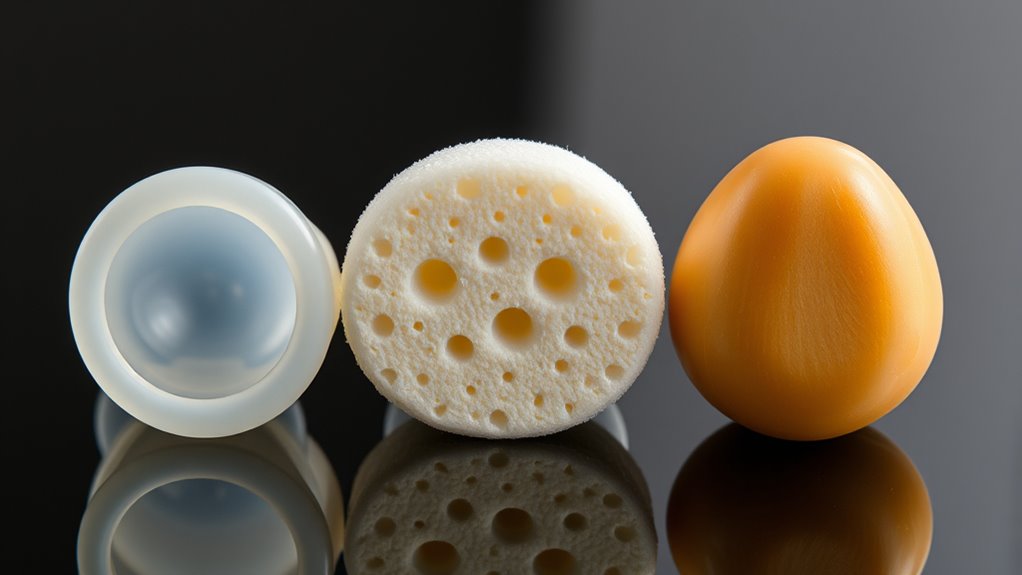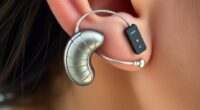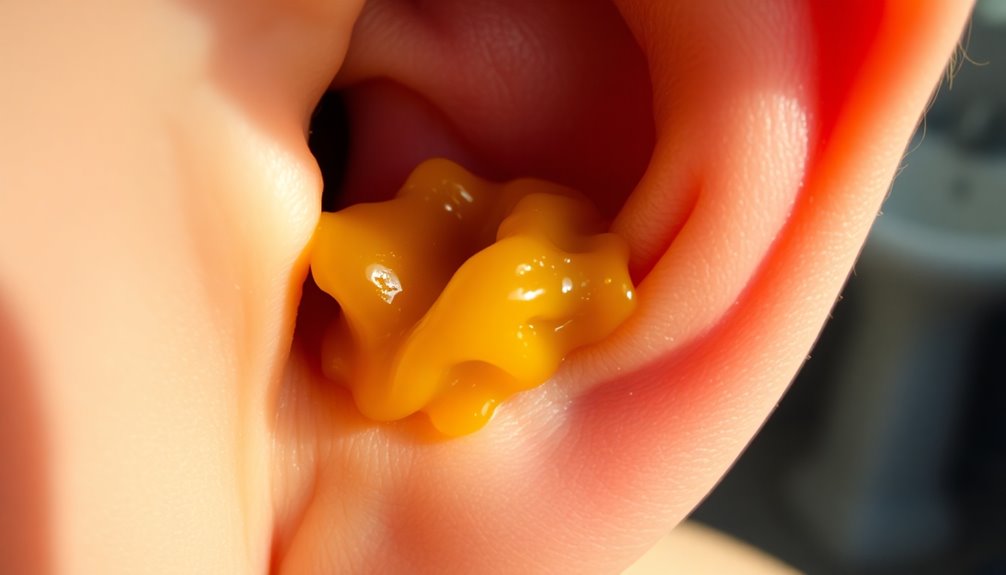When comparing earplug materials like silicone, foam, and wax, consider your comfort, durability, and intended use. Silicone is soft, moldable, and long-lasting, perfect for water activities and repeated use. Foam expands to block noise and is great for sleeping but is usually single-use. Wax offers a customizable fit, ideal for musicians and concertgoers, and can be reused with care. Keep exploring to find out which material suits your needs best.
Key Takeaways
- Silicone earplugs are durable, moldable, waterproof, and suitable for water activities and long-term use.
- Foam earplugs are soft, expandable, and primarily designed for single-use, offering excellent noise reduction.
- Wax earplugs are malleable, moldable, and provide personalized comfort for musicians or concertgoers.
- Silicone is reusable, easy to clean, and resists tearing, unlike foam which is typically disposable.
- Material choice impacts comfort, reusability, activity suitability, and environmental impact of earplugs.
Material Composition and Comfort
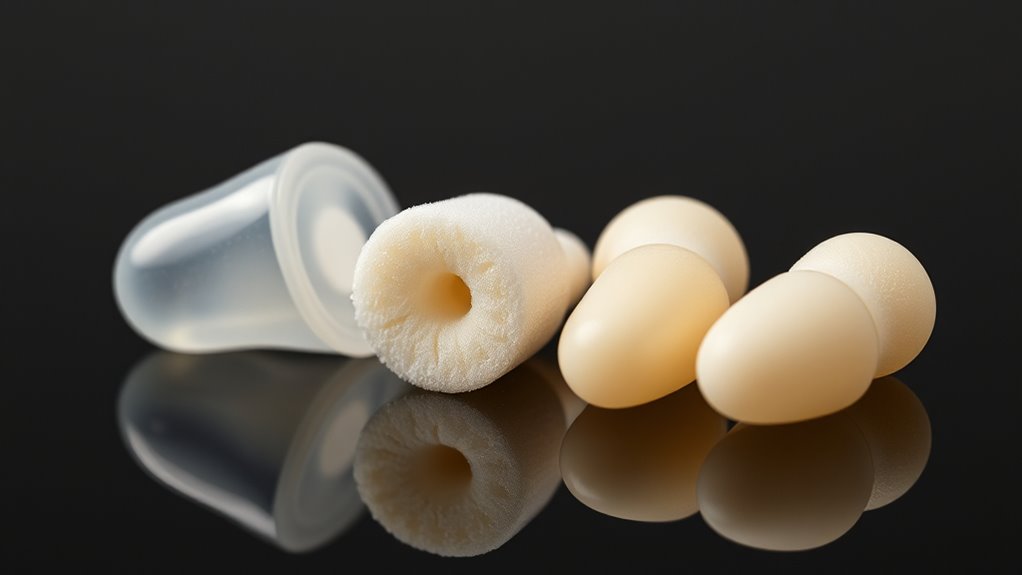
The material composition of earplugs directly impacts both their comfort and effectiveness. When choosing earplugs, you’ll notice that soft, flexible materials conform better to your ear canal, providing a snug fit without pressure. Silicone, known for its smooth texture, offers a comfortable, hypoallergenic option that molds easily. Foam earplugs, on the other hand, expand inside your ear, creating a secure seal while remaining lightweight. Wax-based earplugs combine malleability with a waxy texture, offering personalized comfort by shaping to your ear’s contours. Your experience with comfort depends on how well the material adapts to your ear shape, ensuring a good fit. The right material minimizes irritation and fatigue, making it easier to wear earplugs for extended periods.
Durability and Reusability
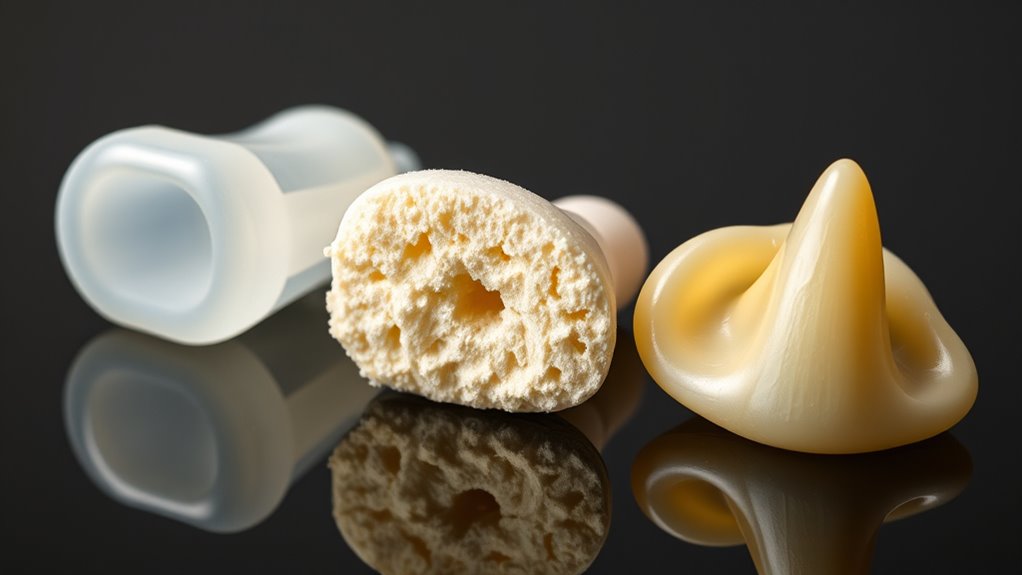
Durability and reusability are key factors to contemplate when selecting earplugs, especially if you plan to use them frequently. Your choice impacts long-term cost, convenience, and environmental footprint. Silicone earplugs stand out for their durability—they can last for months with proper cleaning. Foam earplugs, however, are typically designed for single use, making them less reusable and more wasteful. Wax earplugs often offer moderate reusability but can degrade over time or with exposure to moisture. Consider these points:
- Silicone earplugs resist tearing and maintain shape over time
- Foam earplugs compress easily but lose their shape after a few uses
- Wax earplugs can be reshaped and cleaned, extending their life
- Proper cleaning extends durability for reusable options
- Vetted information on the different material properties can aid in making an informed choice.
Choosing the right material balances reusability with practicality for your routine.
Suitability for Different Uses
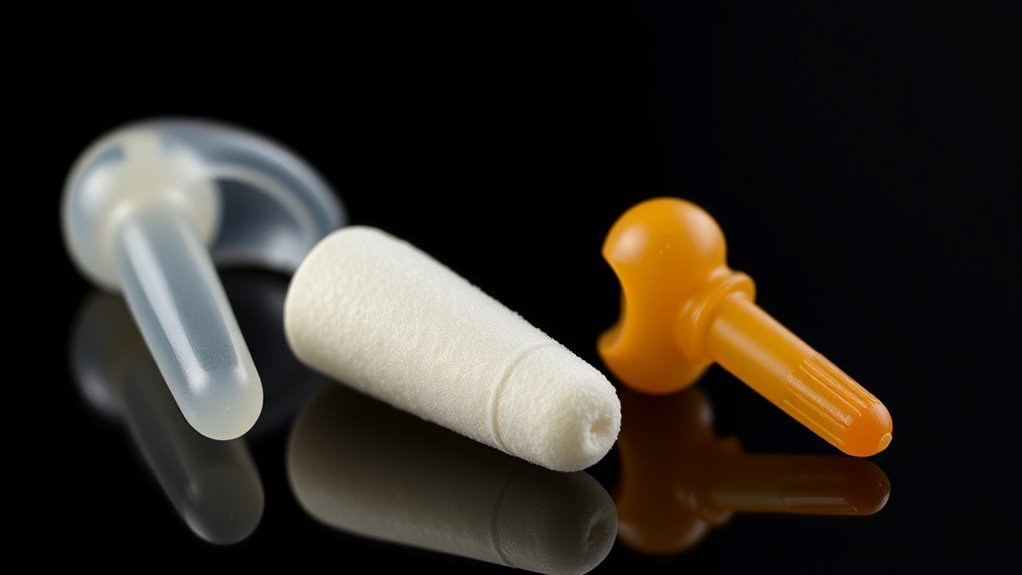
Are you wondering which earplug material best suits your specific activities? Silicone earplugs are ideal for swimming or water sports because they form a waterproof seal and are easy to mold to your ear shape. Foam plugs work well for sleeping or noise reduction, as they expand to block out sound effectively. Wax earplugs are versatile; they’re suitable for musicians or concertgoers, providing comfort and moldability while offering decent noise protection. If you need ear protection during industrial work, foam or silicone may be better due to their durability and sealing properties. Consider your activity’s environment, comfort needs, and whether you need a reusable or disposable option. Matching the right material to your activity ensures better protection and more comfortable use. Additionally, selecting appropriate materials can help address data privacy concerns related to personal health information during manufacturing and use.
Frequently Asked Questions
Are Silicone Earplugs Safe for Long-Term Skin Contact?
You’re wondering if silicone earplugs are safe for long-term skin contact. Generally, silicone is hypoallergenic and gentle on your skin, making it suitable for extended use. However, everyone’s skin reacts differently, so if you experience irritation or discomfort, it’s best to remove the earplugs and consult a healthcare professional. Regular cleaning and proper fit can also help prevent issues, ensuring safe, comfortable wear over time.
How Do Wax Earplugs Perform in Extreme Weather Conditions?
You might worry wax earplugs won’t hold up in extreme weather, but they actually perform well in various conditions. In hot or cold environments, wax remains malleable enough to seal your ears effectively, even if temperatures fluctuate. Plus, they mold comfortably to your ear shape, providing reliable noise reduction. So, with proper care, wax earplugs are a solid choice, even in challenging weather, keeping your ears protected and comfortable.
Can Foam Earplugs Be Customized for Better Fit?
You can customize foam earplugs for a better fit by rolling them into a tight ball, inserting them gently into your ear canal, and holding for a few seconds until they expand fully. This process helps mold the foam to your ear’s shape, providing a snug, comfortable seal. With practice, you’ll find it easier to achieve an ideal fit that effectively blocks noise and stays secure during use.
Are There Allergy Concerns With Any of These Materials?
Did you know that nearly 10% of people are allergic to certain earplug materials? When considering allergy concerns, silicone is generally hypoallergenic, making it safe for most. Foam can cause allergic reactions in some, especially those sensitive to chemicals or adhesives used in manufacturing. Wax is usually safe but may trigger allergies if you’re sensitive to beeswax or other ingredients. Always check product labels and consult a healthcare professional if you’re unsure.
How Eco-Friendly Are the Production Processes for Each Material?
You wonder about the eco-friendliness of making these earplug materials. Silicone production involves energy-intensive processes and sometimes uses non-renewable resources, which isn’t very eco-friendly. Foam manufacturing often relies on chemicals derived from petroleum, contributing to pollution. Wax production is generally more sustainable, especially if sourced locally and produced with minimal processing. Overall, wax tends to be the greener option, but improvements in manufacturing methods could change that.
Conclusion
Choosing the right earplug is like selecting a trusted guardian—silicone offers steadfast protection, foam absorbs every sound like a gentle whisper, and wax molds to your needs, symbolizing flexibility. Think of silicone as a fortress, foam as a cloud of calm, and wax as a personalized shield. By understanding these symbols, you can find the perfect match to guard your peace, comfort, and focus—your personal sanctuary in a noisy world.
